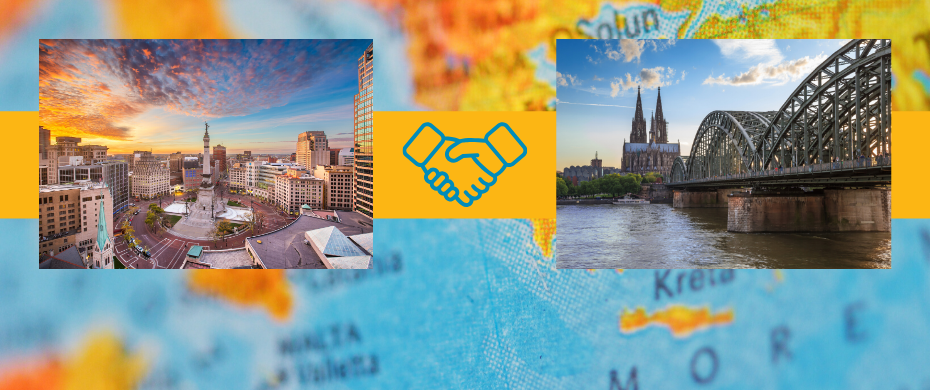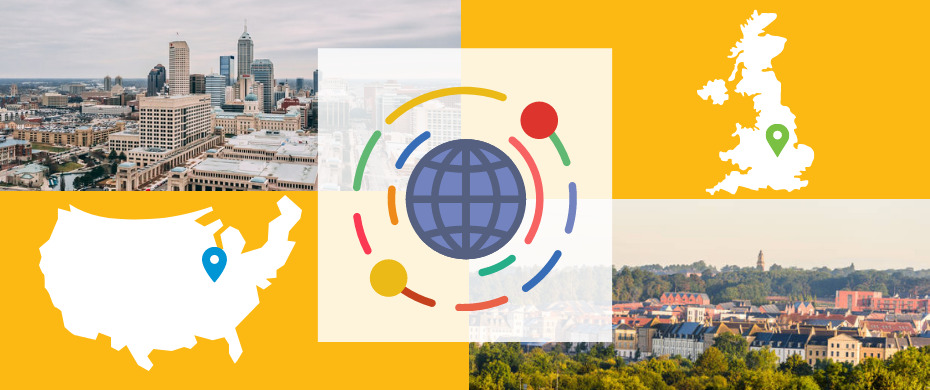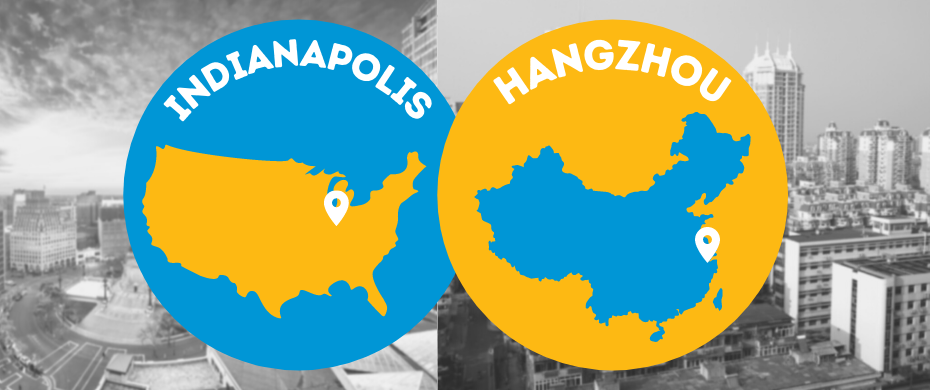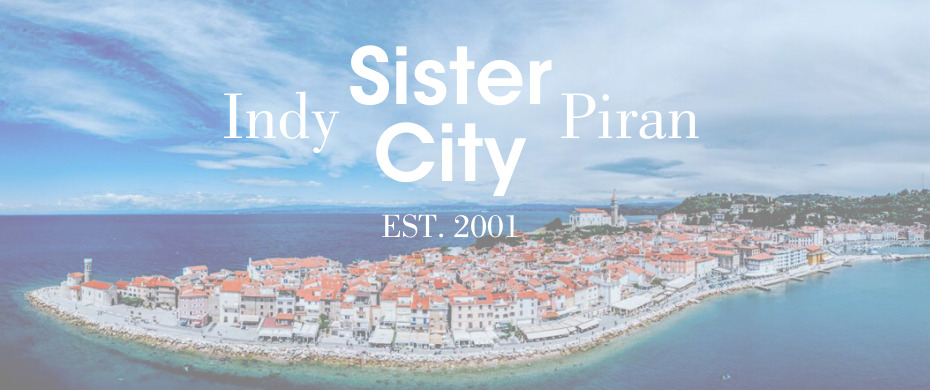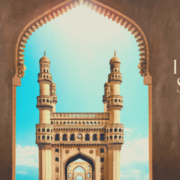INDIANAPOLIS SISTER CITIES: COLOGNE, GERMANY
Cologne, Germany became Indianapolis’s sister city in 1988 after Mayor William Hudnut of Indianapolis and Mayor Norbert Burger of Cologne visited each other’s cities. Since forming the sister cities partnership, the two cities have created many vocational exchanges, including a firefighter exchange where participants spend three weeks with their counterparts working and living together. Indianapolis hopes to continue promoting business partnerships with Cologne through the Indiana-Germany Business Conference.
| Indianapolis | Cologne | |
| Population | 872,680 | 989,766 |
| Size | 372 square miles | 156 square miles |
| Year Established | 1821 | 38 B.C. |
| Number of Sister Cities | 9 | 1 |
Brief History:
The Romans colonized the area on the right bank of the Rhine in 38 B.C. and created a fortified settlement, which would become Cologne. Julia Agippina, wife of emperor Claudius, was born in this settlement, and she requested that the town be named “Colonia Claudia Ara Agrippinensium” in 50 C.E. It was then shortened to “Colonia.” The town changed hands between various governments until 1288 when the citizens of Cologne took control of the town. Cologne became a free imperial city and remained so until 1794 when it was taken by France. During World War II, 90 percent of the inner city was destroyed and only 40,000 people were left living in the area, but it was soon rebuilt into the prosperous city it is today.
Culture:
Cologne is known for its beautiful cathedrals. Cologne Cathedral is the most well-known of the churches, and it is often the landmark associated with the city of Cologne. It was built on the site of another cathedral that burned down in 1248. The church was consecrated in 1322, but construction continued until 1560, and later, restarted in 1842. The cathedral was finally completed in 1880 but was badly damaged in air raids in 1944. It was then restored to its current state. The cathedral is known for its stained-glass windows, gold shrine, and altar. Cologne is also known for its world-famous museums and galleries.
Holidays:
Cologne’s biggest festival is a celebration called “Fastelovend” which is held before Lent. Celebrations and festivals for this holiday have taken place in Cologne since it was founded, but the festival as it is celebrated today has existed for 190 years. There are balls, parades, singing and dancing. Rose Monday is the highlight of the six-day celebration when floats parade through the city.
Food:
Cologne has numerous restaurants that serve distinctive German dishes. One of these dishes is Himmel un Ääd (Heaven and Earth), made with apples and potatoes and resembles mashed potatoes with a distinct sweetness. This dish is often served with blood sausage. Another staple dish of Cologne is Mettbrötchen, which is raw pork sausage meat on a bun. A classic and recognizable German dish that is served in Cologne is Schnitzel, a piece of meat flattened, battered, and fried.
Cologne Today:
Today, Cologne is the fourth largest German city. It has become successful in the banking and automotive industries. For 32 years, Cologne and Indianapolis have had a prosperous relationship, and the success of the partnership will continue for many years.
By Ellie Allen

